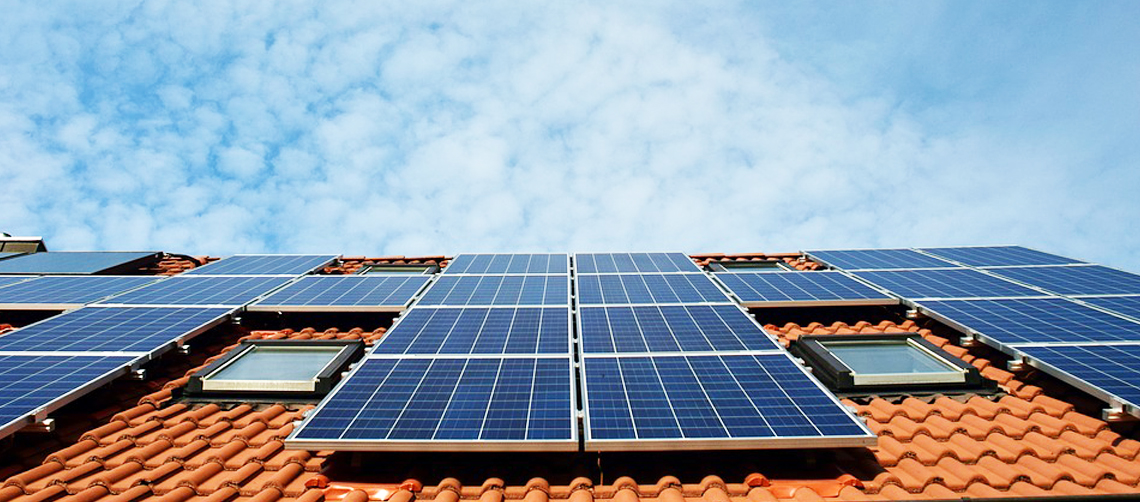Enabling India’s Renewable Energy Outlook with Energy Storage
Although India missed the “energy surplus” bandwagon by mere whiskers this year, we as a nation have advanced tremendously when it comes to energy generation. The share of renewables in overall energy generation has risen drastically from 6% in 2014-15 to almost 10% in 2018-19 [Source: Economic Survey 2019]. According to India Energy Security Scenarios (IESS) 2047, India has the potential of attaining 807 GW of solar and 551 GW of wind capacity by 2047 [Source: Joint report by NITI Aayog and IEE Japan].
Key Challenges in the Grid Integration of Renewable Energy
With Government of India’s aspiring game plan of attaining 175 GW of renewable energy (RE) by 2022, the next few years is going to witness enormous growth in this sector. Due to regional congregation of RE and its rising share in the total energy mix, grid integration of RE is bound to become a critical issue in years to come. Some of the key challenges in the grid integration of RE are:
- Shorter gestation period of RE generation projects than that of transmission projects may lead to mismatch. Proper planning is required to mitigate such situations.
- Long bidding timelines of 5 months adds further to the mismatch of RE projects and associated transmission. Given the pace of RE generation, bidding timelines may be reduced considerably.
- Transmission projects must be awarded competitively at both Centre and State levels so that risk is allocated to parties who are well equipped to mitigate them.
Solutions Available for Generation, Forecasting, Optimisation and Balancing
To reduce the deflections between scheduled and actual dispatch at the State Load Despatch Centre (SLDC) level, forecasting is necessary. The same approach can be undertaken at the Regional Load Despatch Centre (RLDC) level. A grid operator with grid balancing perspective would require forecast at giant spatial region and at smaller timeframe. It is observed that the deviation due to incorrect load forecast and conventional power plants not adhering to schedule is higher than that of the variability due to renewable energy sources.
The correct approach and solution will help to salvage the immediate concerns of balancing RE sources and enable the nation to plan better. Regional balancing, retrofitting and storage options are some of the balancing options for which the cost analysis needs to be performed. As advised by the industry leaders, the options of regional balancing and retrofitting need to be explored to their complete potential prior to the undertaking of storage projects. This aids in deciding upon the priorities of actions with qualitative comparison of various parameters.
Update on Green Energy Corridor
A comprehensive scheme sanctioned for the evacuation and integration of RE capacity addition during the 12th Plan Period, viz Green Energy Corridor is being executed by the renewable rich states of Rajasthan, Tamil Nadu, Maharashtra, Andhra Pradesh, Gujarat and Madhya Pradesh. In addition to setting up of Renewable Energy Management Centre (REMC) and control infrastructure, both Inter, and Intra State transmission systems have been proposed for evacuation of the suggested capacity in these eight RE rich states. The Union Budget for 2019-20 proffered an outlay of Rs 5 billion for the Green Energy Corridor.
The project, which aims at evacuating nearly 20 GW of large-scale renewable power and improving the grid in the implementing states, consists of nearly 9400 ckm transmission lines and substations of capacity 19000 MVA. The project is scheduled to be completed by Dec 2020.
Role and Relevance of Energy Storage for the Utilities
According to International Energy Agency estimate, developing countries will constitute nearly 80% of both total energy production and consumption by 2035, a substantial amount of which will be coming from renewable sources [Source: IEE]. With continuous fall in the prices of RE sources, the requirement of energy storage is increasing.
Some of the key advantages of energy storage are:
- RE Integration – One of the major drawbacks of renewables is their sporadic nature. Battery Energy Storage Systems (BESS) can, however, solve this issue and smoothen the RE profile. For instance, surplus power generated from renewable sources like sun and wind can be stored and supplied at times when the wind is not flowing, or the sun is not shining. Moreover, BESS can also prove blissful for supplying energy to renewable deficient areas.
- Peaking Capacity – With increasing power demands, particularly during certain times of a day or year, discoms are faced with extreme pressure to purchase extra power at tremendously higher rates. Energy storage can be of major importance during peak-demand scenarios, by supplying power stored locally from off-peak hours. This will not only solve peak-demand issues but will also save the discoms from stretching their pockets.
- Transmission & Distribution Deferral – Transmission and Distribution (T&D) Deferral upgrades has unfolded as one of the biggest use cases of energy storage systems. Energy Storage can delay, reduce the size of, or entirely avoid utility investments in short term transmission system upgrades.
- Reducing DSM Penalty – With the aim to have discipline in the grid, the grid operator has defined a narrow band of frequency within which all the generators and distribution companies must operate. Any deviation on either side leads to penalties covered under Deviation Settlement Mechanism (DSM). Having the right size storage helps avoid such penalties by consuming when the power is surplus and ramping up when the power is deficit.
- Ancillary Services – Battery Energy Storage (BESS) provides most efficient solution to ancillary services requirements for the grid.
Author:
Anil Rawal, Senior Vice President – Global Infrastructure Business, Sterlite Power

 Please wait...
Please wait...